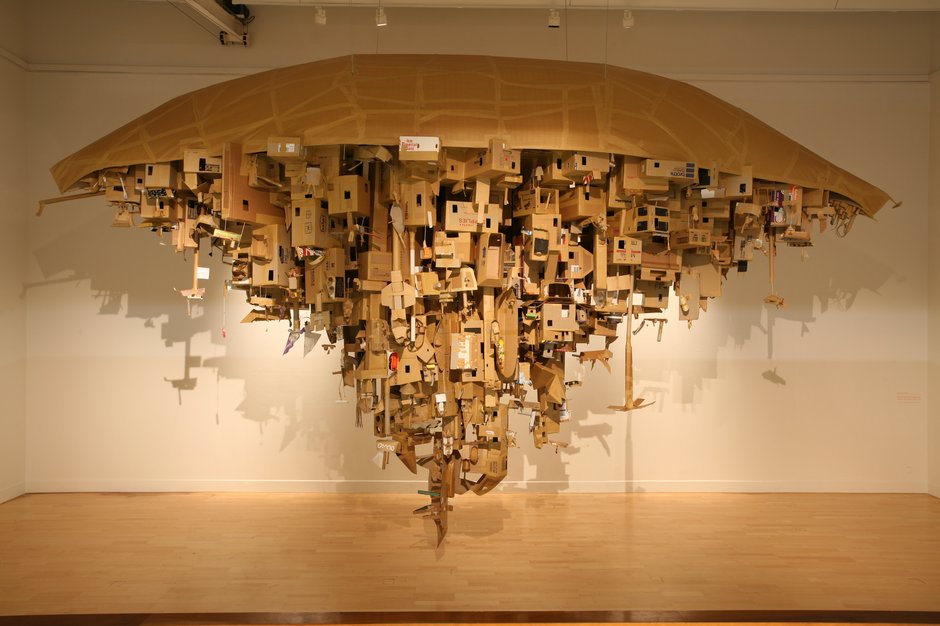
The Unpredictable Imagery of Geoffrey Todd Smith’s Paintings

Title: Monster Roster to Mind Machines: Geoffrey Todd Smith and the Evolution of the Chicago Art Scene
For decades, Chicago has quietly stood apart from other major American art hubs, charting its own course with a distinctive style, an affinity for the grotesque and abstract, and a do-it-yourself ethos that continues to inspire new generations. From the fantastical figures of the Monster Roster to contemporary artists channeling the digital age through paint and ink, Chicago’s art scene thrives on independence, reinvention, and a deep awareness of its own lineage.
One of the brightest examples of this ethos today is Geoffrey Todd Smith, whose exhibition “Assembly” at Western Exhibitions offers a compelling reflection of where Chicago art has been — and where it’s going.
A Legacy of the Macabre and the Outsider
The story of contemporary Chicago art often begins with a lecture delivered in 1951 by French artist Jean Dubuffet at the Chicago Arts Club, titled “Anti-Cultural Positions.” It was here that Dubuffet dismissed the prevailing norms of high culture and identified Ivan Albright — then known for his exquisitely grotesque figure paintings — as the only American artist he admired. This endorsement affirmed a distinctive Chicago sensibility: introspective, rebellious, and morbidly fascinated with the human form.
Following the footsteps of Albright were artists like Leon Golub, June Leaf, and George Cohen — members of what critic Franz Schulze called the “Monster Roster.” These artists delved into expressionist figuration, horror, mythology, and the psychic residue of postwar trauma. Their gritty, unpolished work stood in opposition to the sleek modernism emerging from New York and other power centers.
Though born after this era, Geoffrey Todd Smith’s commitment to localism and personal vision resonates with his artistic ancestors, not through morbid figuration, but through obsessive abstraction.
A Different Kind of Monster
Smith’s solo show “Assembly,” on view through April 12 at Western Exhibitions, offers 15 works on paper rendered with acrylic, gouache, gel pen, and ink. Their small-to-moderate sizes and intricate detailing are a quiet resistance against the large-scale, high-production artworks often favored by wealthier, coastal galleries. Instead of spectacle, Smith’s works pull the viewer into tightly patterned compositions—mathematical, mesmerizing, and strangely alive.
By combining the DIY aesthetic of earlier Chicago artists with the pop-cultural influences of today — video games, comics, science fiction — Smith generates abstract hybrids that seem to teeter between alien technology, robotic avatars, and humanoid daydreams. The works are visually busy yet meticulously ordered, filled with circles, rounded rectangles, and layered zigzags that pulse with energy.
Much like the Monster Roster’s fascination with the body and mortality, Smith offers a mirror to the digital self — our screen-filtered identities and techno-mediated lives. Even his playful titles, such as “King Cobralabra” and “Self-Portrait With Eyes In the Back of My Head,” suggest a fantastical reimagining of humanity through a geometric lens.
Abstraction with a Chicago Accent
Though many of Smith’s contemporaries nationally favor large installations, digital media, or socio-political conceptual art, Smith returns to old-school drawing — and makes it radical again. His uses of repetition, vibratory linework, and optical disruption recall elements of Op Art, but chopped and reassembled through a post-human lens. The result is a fresh kind of abstraction — not the cool detachment of minimalist form, but something tender, obsessive, and visually rich.
Importantly, Smith doesn’t fully abandon the image; he brushes up against representation with shapes that suggest faces, figurines, or future-gadget mascots. In doing this, Smith becomes part of a larger Chicago trend — threading the needle between abstraction and figuration. Earlier generations may have rejected abstraction outright, but Smith embraces it as a way to suggest, rather than portray, the world around him — or perhaps the one rapidly approaching.
The Role of Context: A Chicago Story
In many ways, Smith’s work wouldn’t be possible in a city without an enormous collection of outsider and unfiltered expressions. Chicago’s School of the Art Institute has long fostered disciplinary fluidity, encouraging an embrace of identity, material, and historic process. It’s also home to treasures like Seurat’s Pointillist masterpiece “A Sunday on La Grande Jatte,” which Smith’s work subtly echoes in its tactile dotwork and visual vibration.
Chicago’s location — distant from the art market machinations of New York and Los Angeles — has always given its artists a kind of freedom. This distance allows figures like Smith to develop over decades in a community that values artistic substance over sales data. In “Assembly,” we see this sense of independence carried to a logical extreme: works that exist in their own language systems, inhabited by abstract cyborgs and ornamental organisms.
Toward an AI